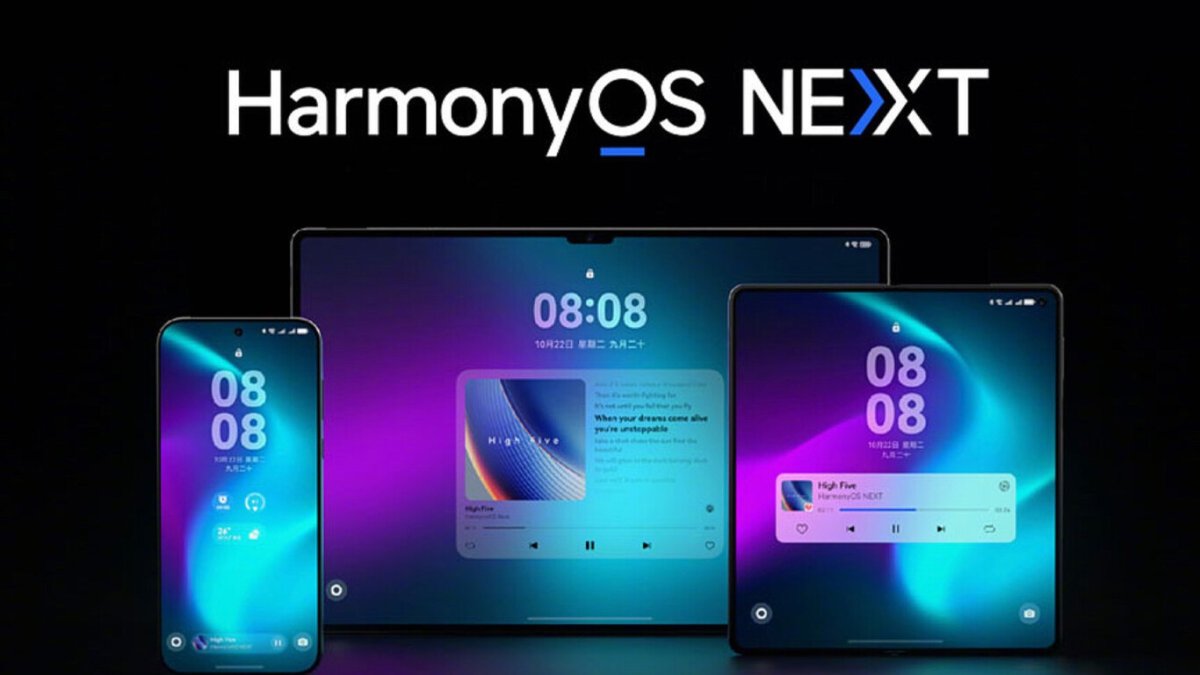Huawei's HarmonyOS Grows Rapidly, Surpassing iOS in China and Challenging Android's Dominance
Huawei's HarmonyOS is swiftly gaining traction, eclipsing iOS in China and positioning itself as a formidable rival to Android's market dominance.

The dominance of Android in the mobile device market is undisputed, with more than 70% of the global population using devices operating on this platform. Meanwhile, iOS occupies a much smaller share, while a new contender is starting to emerge: Huawei's HarmonyOS. Although HarmonyOS is still a minority system in Europe, it has made significant strides in its home country, recently surpassing iOS in China. This raises the question: could HarmonyOS be China's weapon to eventually displace Android entirely?
To provide some context, it’s essential to understand the background of HarmonyOS. In 2019, former President Donald Trump signed an executive order banning companies deemed "a threat to national security," which included Huawei. This led to Google suspending all relations with the Chinese tech giant, leaving Huawei without access to Google applications and an outdated version of Android. While the absence of Google services is less impactful in China, Huawei faced a significant hurdle when it lost access to components from American companies, forcing it to build its own solutions from the ground up to regain competitiveness.
In response to this predicament, Huawei was quick to act. In 2019, they introduced HarmonyOS as an alternative not only to Android but also to Windows, WearOS, and even smart vehicle systems. The approach was clear: if they couldn’t use Android fully, they would create a new operating system for a multitude of devices. The rollout of HarmonyOS was initially slow, first landing on PCs and then on mobile phones. Notably, the system has remained primarily focused on the Chinese market, initially operating on a modified version of Android, while devices in Europe still rely on EMUI, based on Android.
Recognizing the importance of an app ecosystem, Huawei developed its own application store, the App Gallery, which has grown significantly since its launch in 2018. Today, it ranks as the third-largest app repository globally, following Google Play and the App Store.
Currently, HarmonyOS is reaching its potential with the release of HarmonyOS Next, a newly built operating system from the ground up, devoid of any Android code, designed for a variety of technological devices. This ambitious goal is already yielding results, as seen with the Avata 11, an electric vehicle from Huawei that operates on HarmonyOS, alongside the popular mobile devices that dominate sales in China. HarmonyOS has the potential to evolve into a vast ecosystem that enhances Huawei’s hardware and could expand beyond the brand itself.
The pivotal question remains: does HarmonyOS have the capability to replace Android in China? The answer is a resounding yes, but with caveats. China’s unique market conditions—where Google’s applications and services are nearly non-existent—offer HarmonyOS a considerable advantage, although replicating this scenario elsewhere is challenging. Huawei has already migrated a significant portion of its user base to HarmonyOS, with over 300 million devices reported to be using the operating system, marking it as one of the fastest-growing systems in history. Additionally, Huawei has been diligently building its application ecosystem, known as Huawei Mobile Services (HMS), which includes an alternative app store, mapping services, payment solutions, and cloud capabilities.
A crucial factor in popularizing HarmonyOS will involve forging numerous commercial agreements to attract developers to the App Gallery, ensuring that no popular application is missing from its offerings. Furthermore, engaging with significant smartphone manufacturers like Xiaomi, OPPO, Realme, and Lenovo could bolster HarmonyOS's presence in the market. The path forward may be ambitious, but it is certainly within reach.
